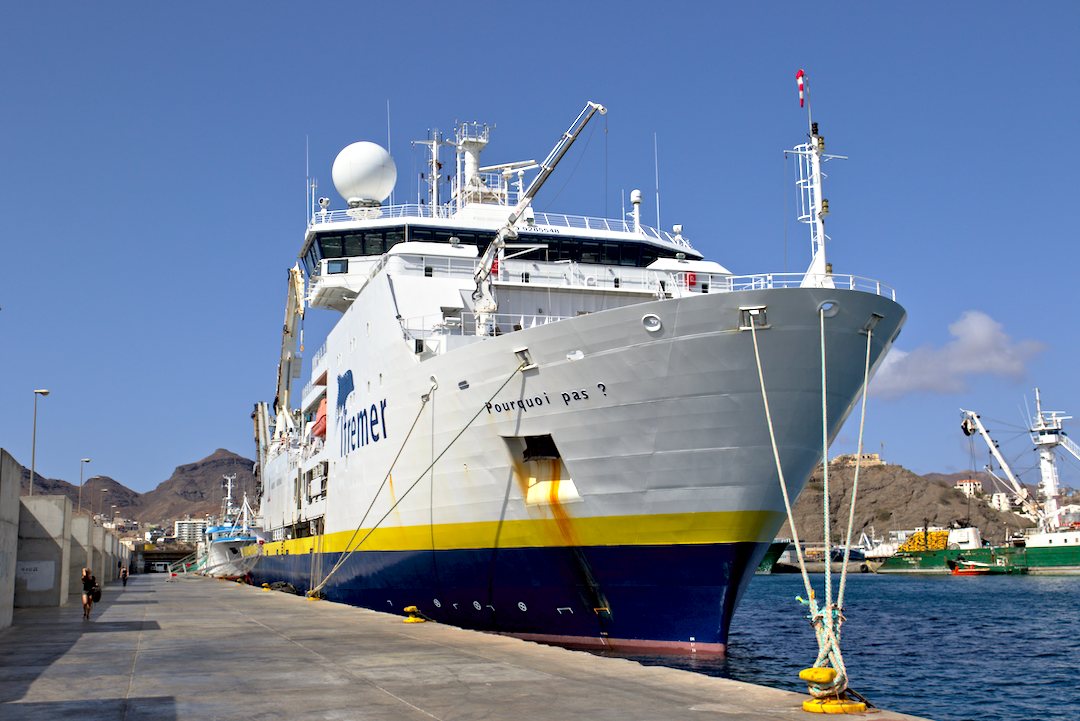Diving number 15 (6 August) of the cruise completed the study of the north wall of the Romanche transform fault. This dive also sampled the base of the south wall. The chosen zone was the intersection between the fault and the axis of the ridge at the nodal basin level. The dive explored the base of the two escarpments, north and south, at the depth of 6000 m and then the north wall up to the depth of 5700 m. The whole area is covered with a thick sedimentary layer, with rock debris and over the entire dive, no outcrop could be observed. The samples taken were therefore not in place.
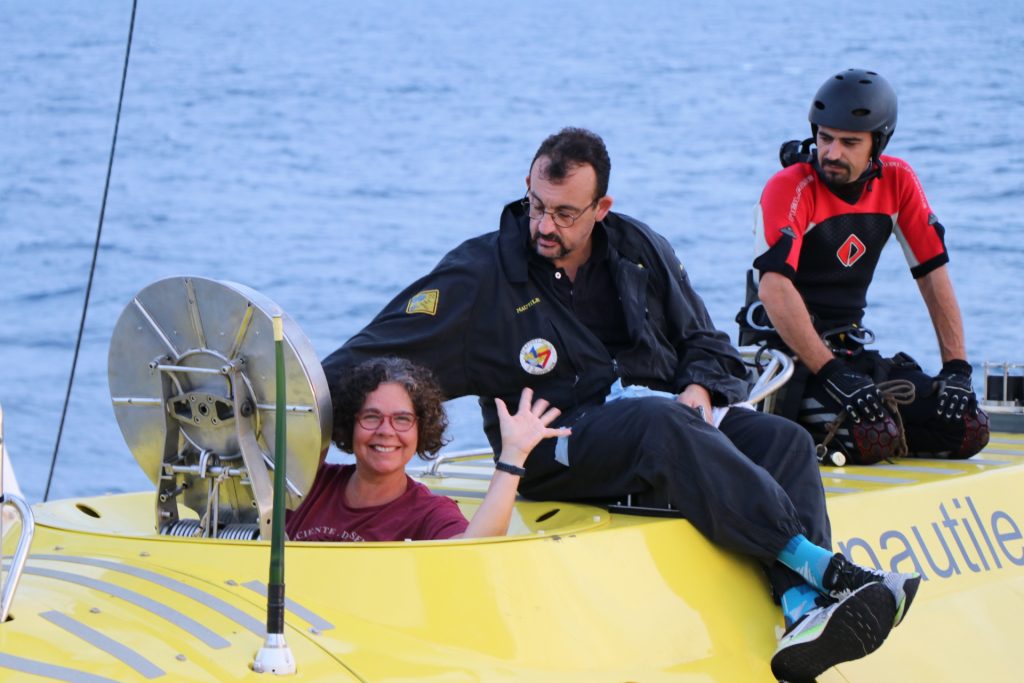
Departure for dive 15. P. G. Ceuleneer. © Ifremer 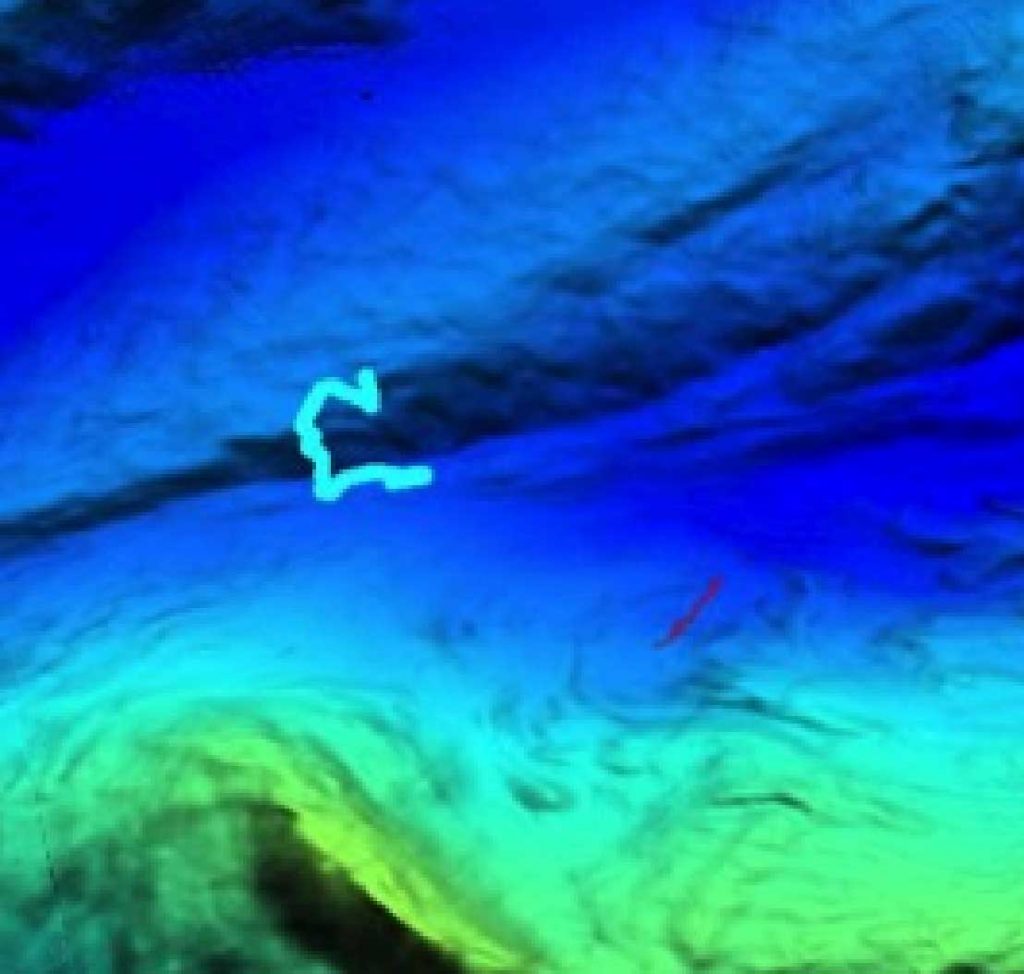
3D view of the bathymetry with the track of the dive. © SMARTIES cruise 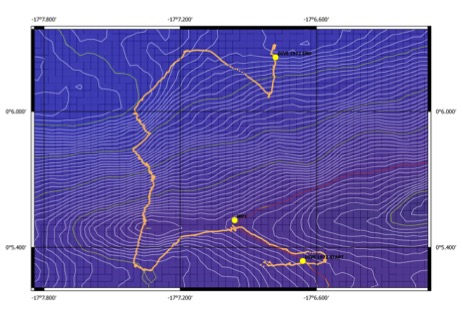
Map with the detailed track of the dive. © SMARTIES cruise
The beginning of the dive was on the bottom of the western portion of the nodal basin, at a depth of 6002 m. The bottom was very sedimented and slopes, gentle with some steps of a few meters of elevation, were oriented towards the east. We began a westward profile, looking for the base of the south-west wall of the nodal basin, and then we entered the narrow valley between the two walls of the transform, traversing an elongated ridge whose north flank sloped down to the bottom of the valley at a depth about 6010 m. We then turned south and mounted a series of steps to reach the slope of the southern flank of the transform. After sampling this area, we crossed the valley, heading north, to reach the base of the slope forming the north wall. At this location, the sediment was marked by sliding structures and deposits of rock fragments. The wall is formed by alternations of relatively steep walls and steps, all heavily covered with sediment. On the steps we could see larger blocks.
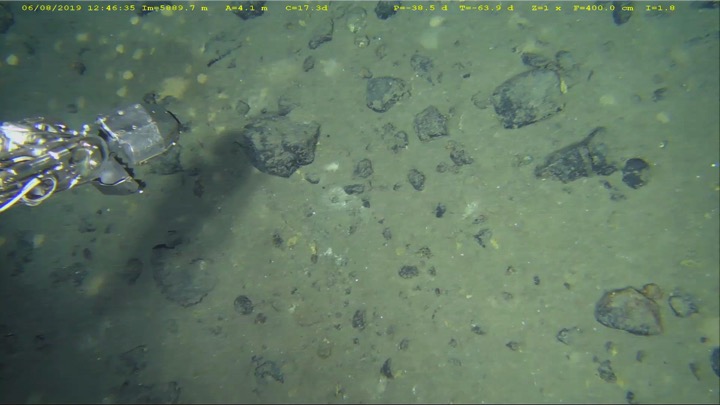
Heavily sedimented seafloor with rock fragments. © SMARTIES cruise 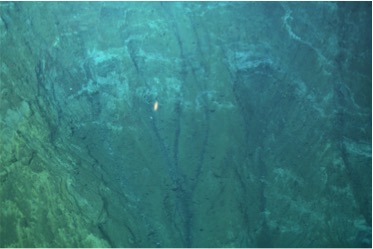
Sedimentary layers affected by sliding on the north wall. © SMARTIES cruise
The samples obtained are plagioclase peridotites and gabbros blocks, not deformed and quite fresh, and a breccia with fragments of peridotites and gabbros. Peridotites are similar to those sampled during the dives across the fault zone, further west.
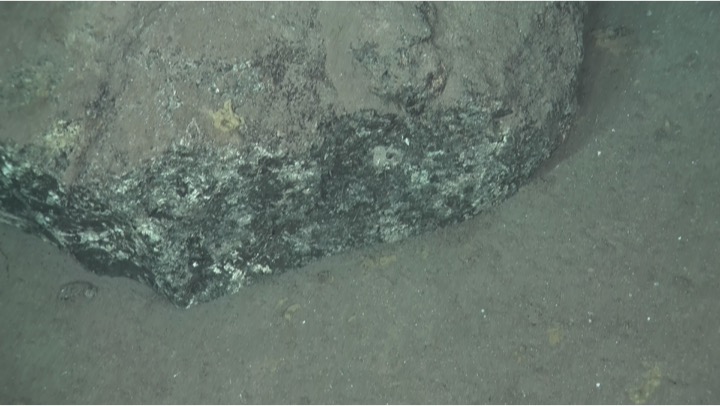
Gabbro block on sediment. © SMARTIES cruise 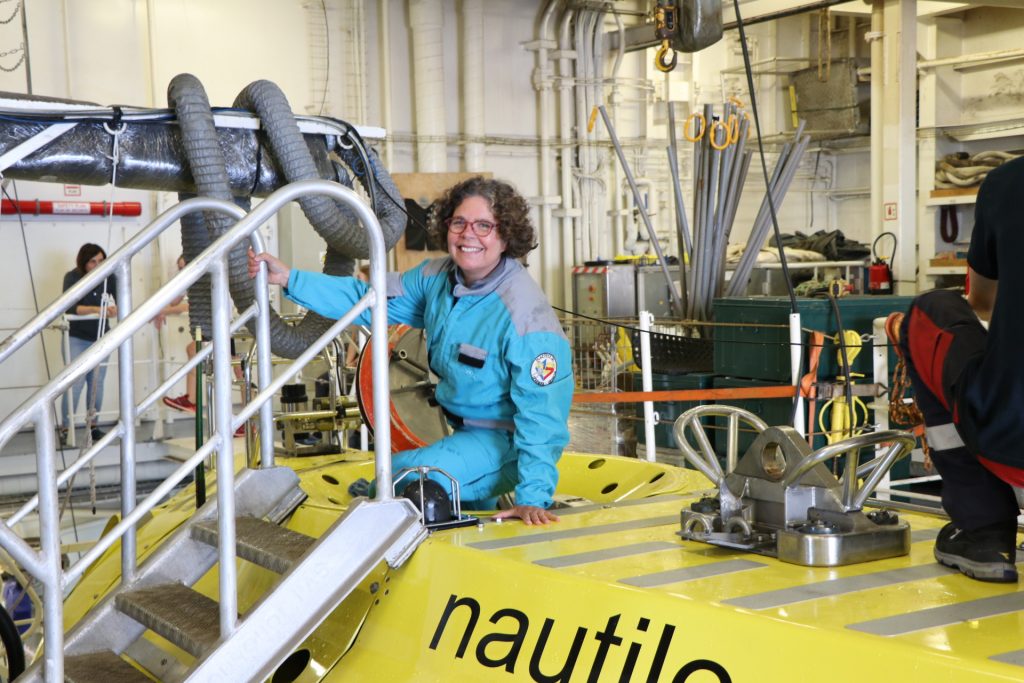
Return from dive 15. P. G. Ceuleneer. © Ifremer
By M. Maia
